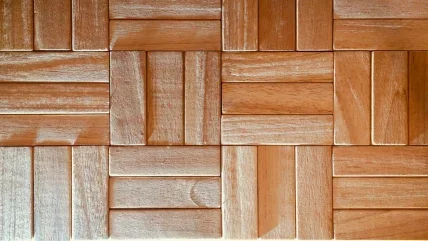
Amid generally tepid UK sales conditions for plywood, the sector has been enlivened by what has been described as "the only topic of conversation in the timber trade at the moment": the EU Timber Regulation (EUTR) will be introduced on March 3, and some in the sector believe it has the potential to leverage a substantial shift in trading patterns, notably impacting volumes travelling between China and Europe.
Chinese mills’ orders from leading overseas buyers have reportedly mushroomed in recent months in what is seen as an attempt to build stocks ahead of EUTR implementation. A local expert said such order levels are "almost certainly out of line with current or imminent demand". This phenomenon is reflected in latest hardwood plywood statistics from the Timber Trade Federation: UK imports from China were 10,000m3 higher in November last year than in November 2011 for a 61% market share.
The stocks of Chinese ply built recently in the UK will mean that the impact of the EUTR will not be felt in earnest until perhaps the latter stages of the second quarter. But given the dominance China has achieved in the UK hardwood plywood market, experts are wondering how the supply gap would be filled in the longer term if volumes from this source were to be cut dramatically as a result of the EUTR. "And if demand picked up in the UK, that would really put the cat among the pigeons," one said, adding that there is no EUTR-compliant source of supply that could "pick up that amount of slack".
Some Chinese mills have raised prices by 2-3% recently to cover, for example, exchange rate movements. Container freights also surged at one point but have since returned to around US$55 per m3 – or some US$5 below the break bulk rate. However, many mills in China are already talking about price increases of up to 10% to take account of the additional production costs that will be entailed if they are to comply with the EUTR.
At the same time, many of the non-FSC producers in China which traditionally supply Europe have conceded that they will be unable to satisfy the EUTR, one contact told TTJ. In response, they have been examining other options, including use of imported European logs/veneers such as beech or the production of dyed (red) poplar face and back veneers. "If my understanding is correct, the price for both alternatives will be higher than plywood with tropical hardwood veneer," he said.
Forward orders
By contrast, China’s FSC-certified plywood producers have seen "a noticeable increase in demand", he said. "Some mills’ production capacities are already being taken up for at least the next few months, with one mill having recently confirmed an order for regular monthly shipments up to December 2013."
For China’s non FSC-certified mills, it must seem as though pressure is coming from all quarters. The US appears almost certain to impose anti-dumping duties on Chinese hardwood and decorative plywood – a move likely to affect more than 100 exporters/mills. "With the onset of the new Australian timber regulations and rumblings in India about the damage being done to the Indian plywood manufacturing sector by Chinese suppliers, the situation does not look good for Chinese suppliers who are seeing their traditional markets quickly shrink or disappear," TTJ was told. Chinese mills are now engaged in "serious competition amongst themselves" as they are forced to seek new outlets.
For the moment, virtually every mill in China is closed for at least a fortnight for the New Year celebrations; some in the north of the country shut early because temperatures as low as -20°C made it impossible to air-dry poplar veneers.
Malaysian plywood producers have also been exercised of late by EUTR compliance issues although the country benefits to a greater extent from "traditional supply streams that can be tracked", one contact said. UK demand for Malaysian plywood has been muted despite a slight price softness which has been attributed to agents’ willingness to take a reduced share of the pot.
With shipping lines planning another attempt to hike freight rates at the start of March, there is the possibility that Malaysia’s plywood prices will rise in the coming weeks. Any increase is not expected to be substantial even though cost pressures have been mounting on Malaysian producers: for example, the country’s immigrant workers are now also entitled to a minimum wage and glue costs have increased sharply.
Demand for Finnish spruce plywood has been reasonable since the start of the year. One producer told TTJ in mid-February that his company’s production was already fully allocated for the remainder of the first quarter and that, against this backdrop, a price increase of 3-4% could be sought for the second quarter. However, there is concern that any such move may prove difficult to sustain, especially as Chilean capacity is scheduled to increase considerably this year.
Finnish birch ply demand has continued to be "slack" over recent months, with key end users – such as the transport sector – said to be quiet. Spot deals have been obtainable on decent volumes of business and no headline price increases are anticipated in the immediate future, TTJ was told.
"Flat" UK demand was also noted by Latvian plywood suppliers. Prices held steady for the first quarter but mill managers are thought to be pushing for increases in the second quarter, partly as a response to higher costs but also to improved demand from elsewhere within Europe.
As for elliottii pine plywood from Brazil, prices have been firm and demand from the country’s own market, the US and wider export outlets has been strong. However, recent sales activity in the UK has been described as "almost non-existent".


